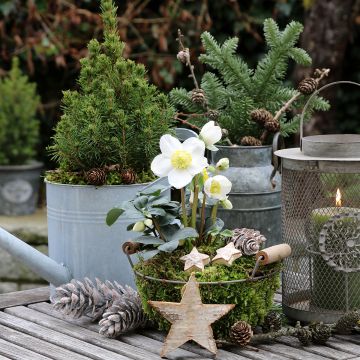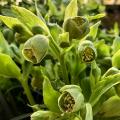Hellebore, the Christmas Rose, all our special offers
Does this plant fit my garden? Set up your Plantfit profile →
The Christmas rose, also known as Helleborus niger or black hellebore, is appreciated for its long winter flowering. This evergreen perennial blooms even under the snow! With the earliest varieties, the flowers begin to open in December. They are pure white and turn pink and green as they fade. It is worth noting that there are also superb double varieties, such as 'Double Fashion'. Although it can be found naturally in Europe, it is perhaps the most challenging variety of hellebore to grow successfully. The Christmas rose does not like overly acidic soil and prefers alkaline soil that is light and rich in humus, in a sheltered position away from direct sunlight.
Haven't found what you were looking for?













































